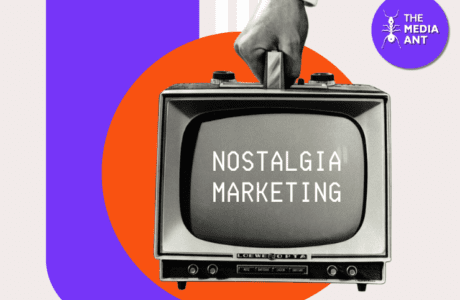What is Agile Marketing?
Imagine a marketing department that throws out long, detailed plans and embraces constant tinkering instead. That’s the core idea of Agile Marketing. It borrows from the world of software development, where projects are broken down into small chunks and constantly improved based on feedback.
In Agile Marketing, marketers ditch the rigid plans and focus on short, achievable sprints. They prioritize understanding their customers’ needs and constantly test new ideas. Data and customer feedback are used to measure success, and campaigns are tweaked on the fly for better results. This allows for faster learning, adaptation, and ultimately, growth. It’s all about staying nimble and responsive in a rapidly changing market.
Top 10 Agile Marketing Techniques in 2024
1. Collaboration over Hierarchy
Traditionally, marketing departments might have information flowing top-down. Agile marketing flips this script. Everyone’s ideas are valued, regardless of position. This fosters a more creative environment where information is shared freely, leading to better solutions.
2. Experimentation & Learning
Agile marketing encourages trying new things and not being afraid to fail. Test different marketing tactics and channels, like running A/B tests on ad copy or social media strategies. Analyze the results to see what resonates with your audience. This data-driven approach helps you identify the most effective marketing strategies.
3. Discovery over Predictions
Forget trying to predict the future! Agile marketing focuses on gathering real-time customer insights through testing and feedback loops. Conduct surveys, run social media polls, or use website heatmaps to understand your audience’s needs and preferences. This allows you to adapt your marketing messages and campaigns based on what truly resonates with them.
4. Simplicity & Data-Driven Decisions
Complex marketing plans can be cumbersome and slow you down. Agile marketing emphasizes keeping things clear and concise. Break down your goals into smaller, achievable objectives. Use data from your experiments and customer interactions to make informed decisions about where to allocate your resources for maximum impact.
5. Agile Methodologies & Flexible Planning
Agile marketing utilizes frameworks like sprints (short work cycles) to break down large marketing projects into smaller, manageable tasks. This allows your team to focus on completing specific goals within each sprint. As you learn and gather new information, you can adapt your plans and adjust your approach in the next sprint.
6. Focus on Marketing Fundamentals
While agility is important, don’t neglect the core principles of marketing. Ensure your campaigns are aligned with your overall marketing goals and brand strategy. Solid fundamentals like building brand awareness, driving conversions, and nurturing leads remain essential for success.
7. Customer Satisfaction & Continuous Improvement
Putting your customers first is paramount. Agile marketing prioritizes understanding and exceeding customer expectations. Constantly gather feedback through surveys, social media interactions, or customer support channels. Use this information to iterate and improve your marketing efforts, ensuring they deliver value and satisfaction to your audience.
8. Transparency & Feedback
Open communication is key. In an Agile Marketing environment, information is shared freely within the team. This allows everyone to stay on the same page and collaborate effectively. Additionally, encourage constant customer feedback. Use surveys, social listening tools, or customer support interactions to understand their perceptions and concerns. This transparency allows for quicker problem-solving and course correction.
9. Respond to Change
The market is constantly evolving. Agile marketing allows you to be adaptable. As customer needs or trends change, you can adjust your strategies quickly. This agility ensures your marketing efforts remain relevant and effective in a dynamic marketplace.
10. Learn from Failure
Mistakes are inevitable, but they shouldn’t be seen as setbacks. Agile marketing encourages viewing failures as learning opportunities. Analyze what went wrong in your experiments or campaigns. Identify the root causes and use that knowledge to refine your approach for future success. By embracing a “learn from failure” mentality, your team can continuously improve and achieve better results.
Agile Marketing in Newspaper Advertising
Agile marketing principles can indeed be applied to newspaper advertising. By utilizing Agile methodologies, newspaper advertising teams can react quickly to changing market trends, consumer behaviors, and advertising performance data. They can adapt their advertising strategies, messaging, and creative content rapidly to optimize results and capitalize on emerging opportunities. This approach enables newspaper advertising teams to remain competitive in a fast-paced media landscape, where timely and relevant messaging is crucial for engaging audiences and driving ROI.
FAQs Related To Agile Marketing
How to apply agile to marketing?
Break down projects into sprints (short work cycles).
Prioritize tasks and focus on delivering value quickly.
Experiment with different marketing tactics and channels.
Use data to track progress and measure success.
Gather customer feedback and iterate on campaigns based on learnings.
Maintain open communication and collaboration within your team.
Be adaptable and ready to adjust plans as needed.
Why is Agile marketing important?
In today’s rapidly changing marketing landscape, Agile Marketing is crucial for keeping up. It allows you to be nimble and adaptable, constantly testing and learning what resonates with your audience. This data-driven approach ensures you deliver real value to customers quickly, while ditching what doesn’t work. Essentially, Agile Marketing helps you outsmart the competition by being faster, more responsive, and ultimately, more customer-centric.
What is an example of agile marketing?
An example of Agile Marketing is a software company rapidly adjusting its social media advertising strategy based on real-time data analysis to capitalize on trending topics and engage with its target audience more effectively.
What are the tools of agile marketing?
The tools of Agile Marketing include project management platforms like Jira or Trello for task organization, communication tools such as Slack or Microsoft Teams for real-time collaboration, analytics tools like Google Analytics for data-driven insights, and marketing automation platforms like HubSpot for streamlining processes and nurturing leads. These tools enable Agile Marketing teams to work efficiently, adapt quickly, and deliver results in a dynamic environment.
What is agile tool used for?
Agile tools are used to facilitate and streamline Agile methodologies in project management and software development. They help teams manage tasks, track progress, collaborate effectively, and adapt to changes quickly, ultimately improving productivity and project outcomes.
Where is agile mostly used?
Agile methodologies are primarily used in software development but have expanded to various industries including marketing, product management, and project management. It’s most commonly utilized in environments where flexibility, collaboration, and responsiveness to change are essential for success.





